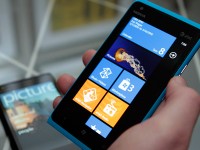This corporate crisis management analysis examines Nokia's rapid response to Lumia 900 cellular data connectivity issues, providing complete $100 refunds to all customers regardless of problem impact while establishing exemplary customer service standards during the critical Windows Phone 7.5 market launch period. Patrick Bisch documents the technical problem affecting AT&T network reconnection after device restarts or airplane mode activation, Nokia's immediate acknowledgment within two days of launch, and the unprecedented customer compensation strategy that effectively made the device free for early adopters. The coverage captures Nokia's strategic attempt to rebuild market credibility while competing against established iOS and Android platforms through superior customer service differentiation.
The technical issue analysis covers the cellular data connectivity glitch preventing Lumia 900 devices from reconnecting to AT&T's network following restarts or airplane mode usage, affecting core smartphone features during the critical launch period when first impressions determined market acceptance. The corporate response timeline evaluation examines Nokia's rapid two-day acknowledgment period, immediate manufacturing adjustment to include software fixes in new devices, and the coordination with AT&T stores for device replacement and software update distribution beginning April 16th. The customer compensation strategy assessment details the universal $100 credit application regardless of single problem experience, extending coverage through April 21st midnight deadline, and the marketing benefit of effectively offering free flagship devices to drive Windows Phone adoption.
The crisis management excellence analysis encompasses Nokia's proactive responsibility assumption without customer blame, complete compensation exceeding the actual issue impact, and transparent communication through Nokia U.S. Chief Chris Weber's media interviews providing clear resolution timelines and customer options. The competitive positioning evaluation covers the strategic contrast with Apple's iPhone 4 antenna gate response that blamed users rather than accepting responsibility, establishing Nokia's customer-first approach as differentiation against competitor practices. The market opportunity assessment examines the potential dual benefit of genuine customer service excellence combined with clever marketing positioning that attracted new customers seeking free flagship smartphones during Nokia's market share recovery efforts.
The industry precedent establishment analysis encompasses the recommendation that Nokia's response serve as standard practice for smartphone manufacturers facing technical issues, emphasizing corporate responsibility, customer compensation, and transparent communication rather than defensive positioning or customer blame strategies. The Windows Phone ecosystem support evaluation covers Nokia and Microsoft's coordinated effort to maintain platform credibility during critical launch periods when market perception influenced long-term adoption success. The consumer advocacy implications assessment examines how Nokia's approach empowered customer expectations for corporate accountability, fair compensation, and responsive customer service across the technology industry.
This Nokia Lumia 900 refund response represents the critical corporate crisis management period when smartphone manufacturers' customer service approaches importantly influenced brand perception, market positioning, and competitive differentiation during intense platform competition. Looking back 12+ years later, Nokia's customer-first response established standards for technology company crisis management that influenced industry practices, consumer expectations, and regulatory approaches to corporate accountability across technology platforms. The rapid acknowledgment and complete compensation approach showd effective crisis communication strategies that became standard practice for technology companies facing product issues, including software update transparency, customer compensation frameworks, and proactive problem resolution. The universal compensation strategy reflected recognition that customer trust and brand reputation often outweigh immediate financial costs, influencing modern customer experience strategies across technology companies and service industries worldwide. The competitive differentiation through superior customer service validated alternative strategies for companies competing against established market leaders, demonstrating that customer experience excellence could offset technological disadvantages or market position challenges. The Windows Phone ecosystem coordination highlighted the importance of platform partner cooperation during crisis situations, influencing modern technology partnership strategies and collaborative customer support approaches across integrated technology ecosystems. The transparency and media communication strategy established frameworks for corporate communication during product issues that prioritized customer benefit, clear timelines, and accessible resolution processes over defensive messaging or blame deflection. This moment captures the foundational period when technology company customer service approaches evolved from defensive positioning toward proactive customer advocacy that established modern standards for corporate responsibility, customer compensation, and crisis management excellence across the technology industry worldwide.
This summary was created by Dave Rogers. The original post was written by Patrick Bisch and published on April 1, 2012.
If you'd like to view the original post, you can find it here.
